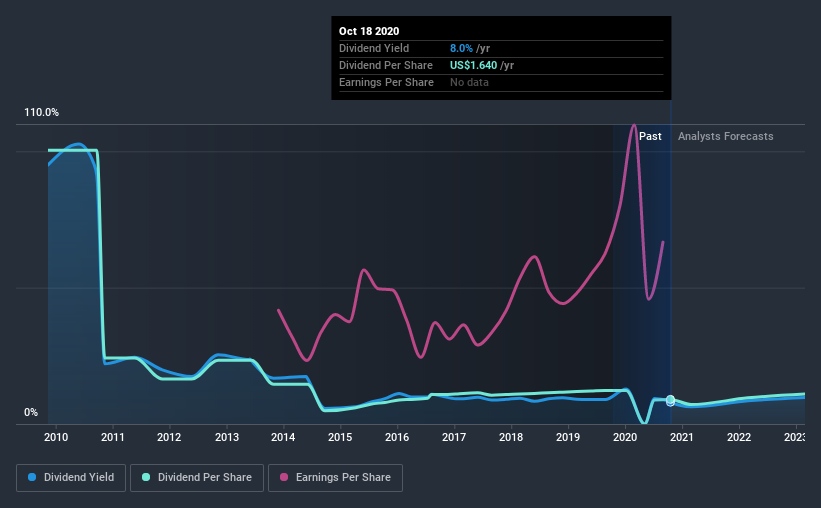Be Sure To Check Out Saratoga Investment Corp. (NYSE:SAR) Before It Goes Ex-Dividend

It looks like Saratoga Investment Corp. (NYSE:SAR) is about to go ex-dividend in the next 4 days. Investors can purchase shares before the 23rd of October in order to be eligible for this dividend, which will be paid on the 10th of November.
Saratoga Investment's next dividend payment will be US$0.41 per share. Last year, in total, the company distributed US$1.64 to shareholders. Looking at the last 12 months of distributions, Saratoga Investment has a trailing yield of approximately 8.0% on its current stock price of $20.53. We love seeing companies pay a dividend, but it's also important to be sure that laying the golden eggs isn't going to kill our golden goose! So we need to investigate whether Saratoga Investment can afford its dividend, and if the dividend could grow.
See our latest analysis for Saratoga Investment
Dividends are usually paid out of company profits, so if a company pays out more than it earned then its dividend is usually at greater risk of being cut. Saratoga Investment paid out a comfortable 38% of its profit last year.
Generally speaking, the lower a company's payout ratios, the more resilient its dividend usually is.
Click here to see the company's payout ratio, plus analyst estimates of its future dividends.
Have Earnings And Dividends Been Growing?
Stocks in companies that generate sustainable earnings growth often make the best dividend prospects, as it is easier to lift the dividend when earnings are rising. If earnings decline and the company is forced to cut its dividend, investors could watch the value of their investment go up in smoke. For this reason, we're glad to see Saratoga Investment's earnings per share have risen 12% per annum over the last five years.
Saratoga Investment also issued more than 5% of its market cap in new stock during the past year, which we feel is likely to hurt its dividend prospects in the long run. It's hard to grow dividends per share when a company keeps creating new shares.
Another key way to measure a company's dividend prospects is by measuring its historical rate of dividend growth. Saratoga Investment has seen its dividend decline 21% per annum on average over the past 10 years, which is not great to see. It's unusual to see earnings per share increasing at the same time as dividends per share have been in decline. We'd hope it's because the company is reinvesting heavily in its business, but it could also suggest business is lumpy.
The Bottom Line
Is Saratoga Investment worth buying for its dividend? Typically, companies that are growing rapidly and paying out a low fraction of earnings are keeping the profits for reinvestment in the business. Perhaps even more importantly - this can sometimes signal management is focused on the long term future of the business. In summary, Saratoga Investment appears to have some promise as a dividend stock, and we'd suggest taking a closer look at it.
So while Saratoga Investment looks good from a dividend perspective, it's always worthwhile being up to date with the risks involved in this stock. For example, Saratoga Investment has 4 warning signs (and 1 which doesn't sit too well with us) we think you should know about.
We wouldn't recommend just buying the first dividend stock you see, though. Here's a list of interesting dividend stocks with a greater than 2% yield and an upcoming dividend.
This article by Simply Wall St is general in nature. It does not constitute a recommendation to buy or sell any stock, and does not take account of your objectives, or your financial situation. We aim to bring you long-term focused analysis driven by fundamental data. Note that our analysis may not factor in the latest price-sensitive company announcements or qualitative material. Simply Wall St has no position in any stocks mentioned.
Have feedback on this article? Concerned about the content? Get in touch with us directly. Alternatively, email editorial-team@simplywallst.com.

 Yahoo News
Yahoo News 
